
How to Use Vant Battery 5200mAh 50C 11.1V 57.72Wh High Discharge Li-Po Battery: Examples, Pinouts, and Specs
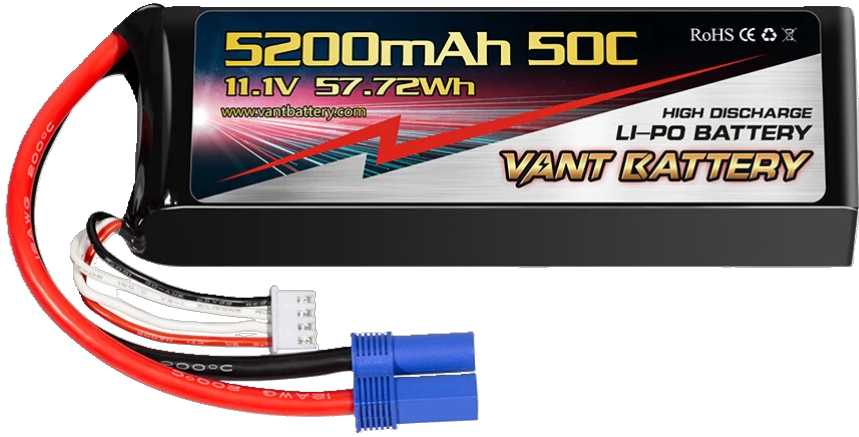
 Design with Vant Battery 5200mAh 50C 11.1V 57.72Wh High Discharge Li-Po Battery in Cirkit Designer
Design with Vant Battery 5200mAh 50C 11.1V 57.72Wh High Discharge Li-Po Battery in Cirkit DesignerIntroduction
The Vant Battery 5200mAh 50C 11.1V 57.72Wh High Discharge Li-Po Battery is a high-performance lithium polymer (Li-Po) battery designed for demanding applications. With a capacity of 5200mAh, a high discharge rate of 50C, and a nominal voltage of 11.1V, this battery is ideal for powering remote-controlled (RC) vehicles, drones, and other high-drain electronic devices. Its lightweight and compact design make it a popular choice for hobbyists and professionals alike.
Explore Projects Built with Vant Battery 5200mAh 50C 11.1V 57.72Wh High Discharge Li-Po Battery
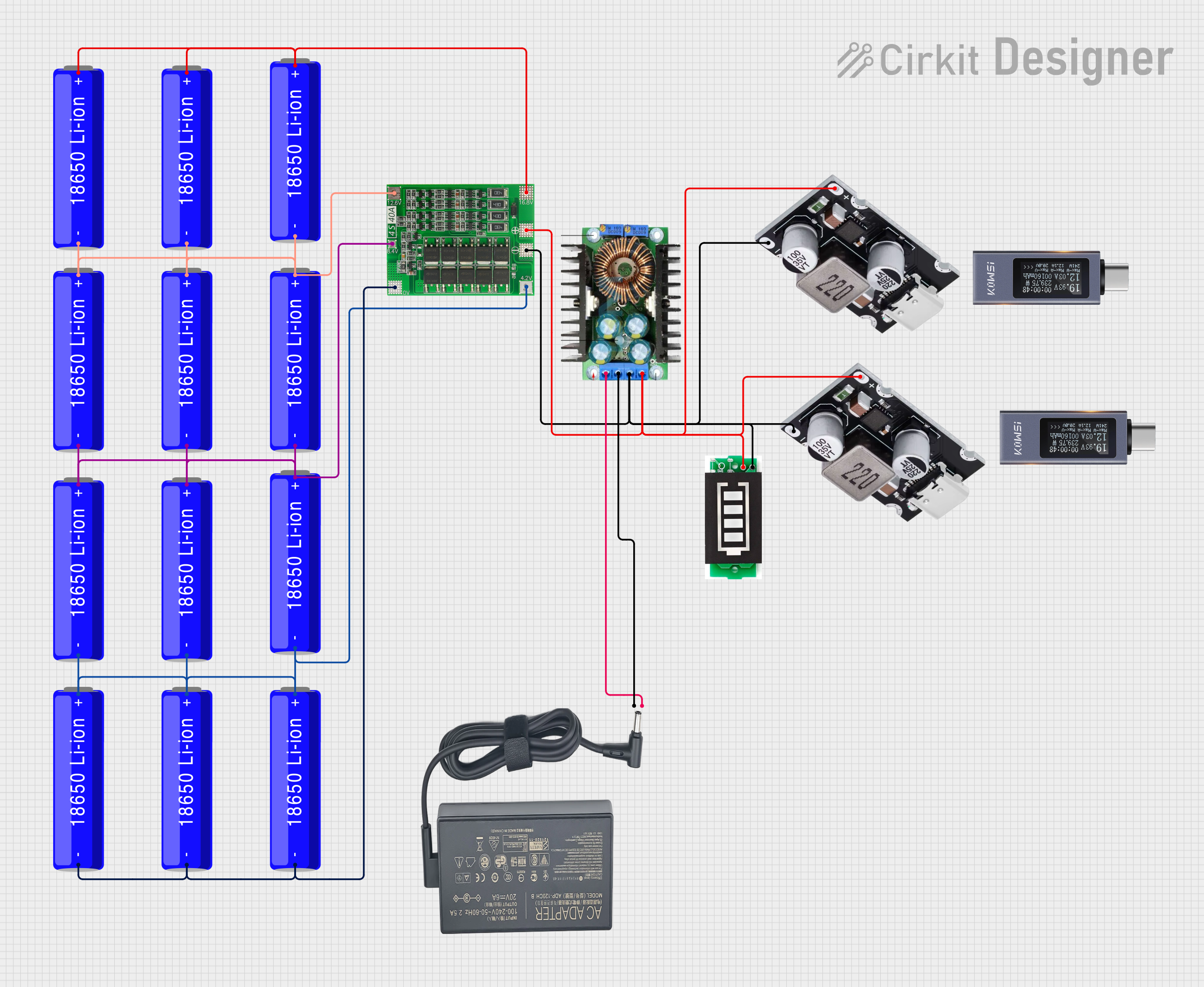
 Open Project in Cirkit Designer
Open Project in Cirkit Designer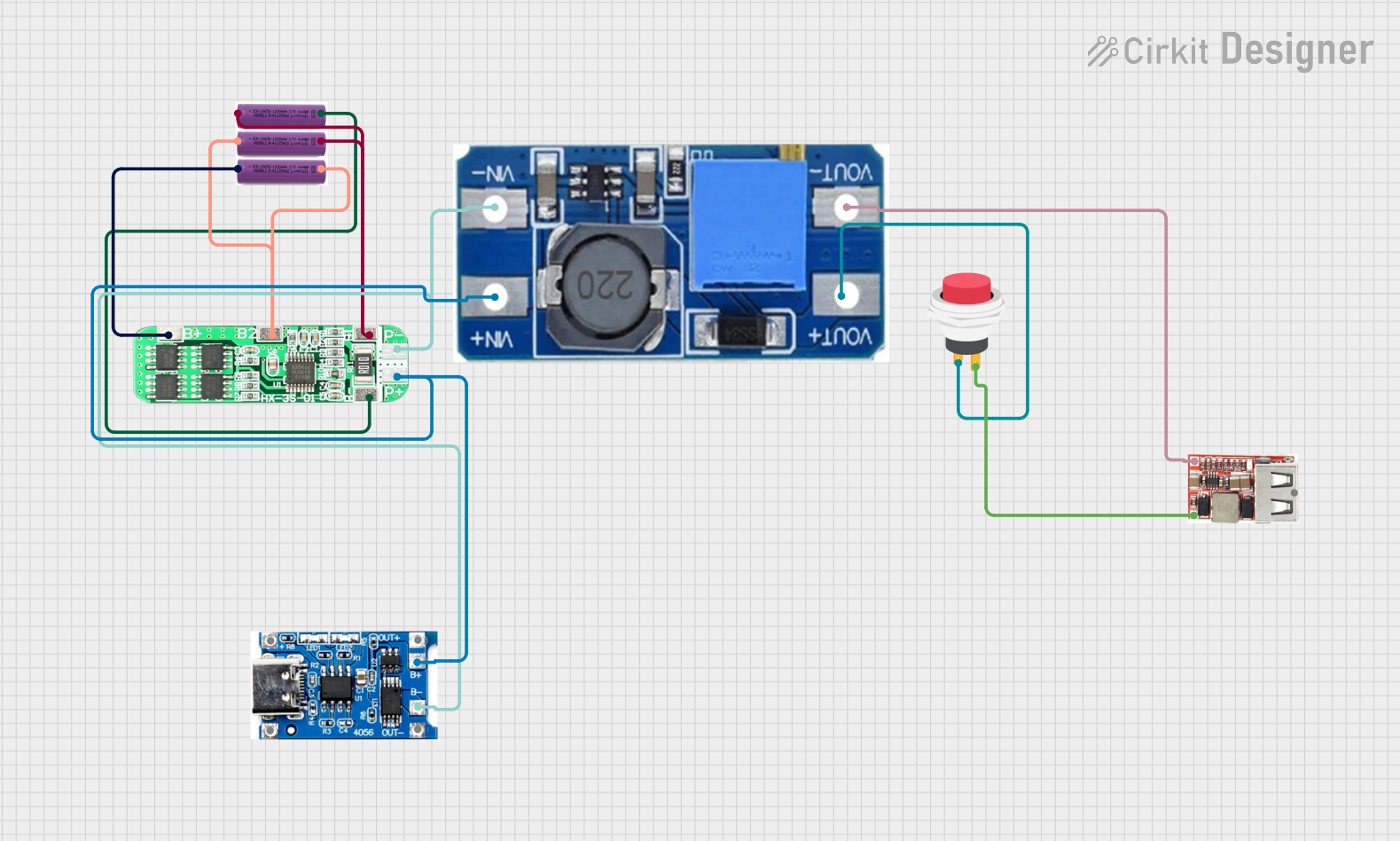
 Open Project in Cirkit Designer
Open Project in Cirkit Designer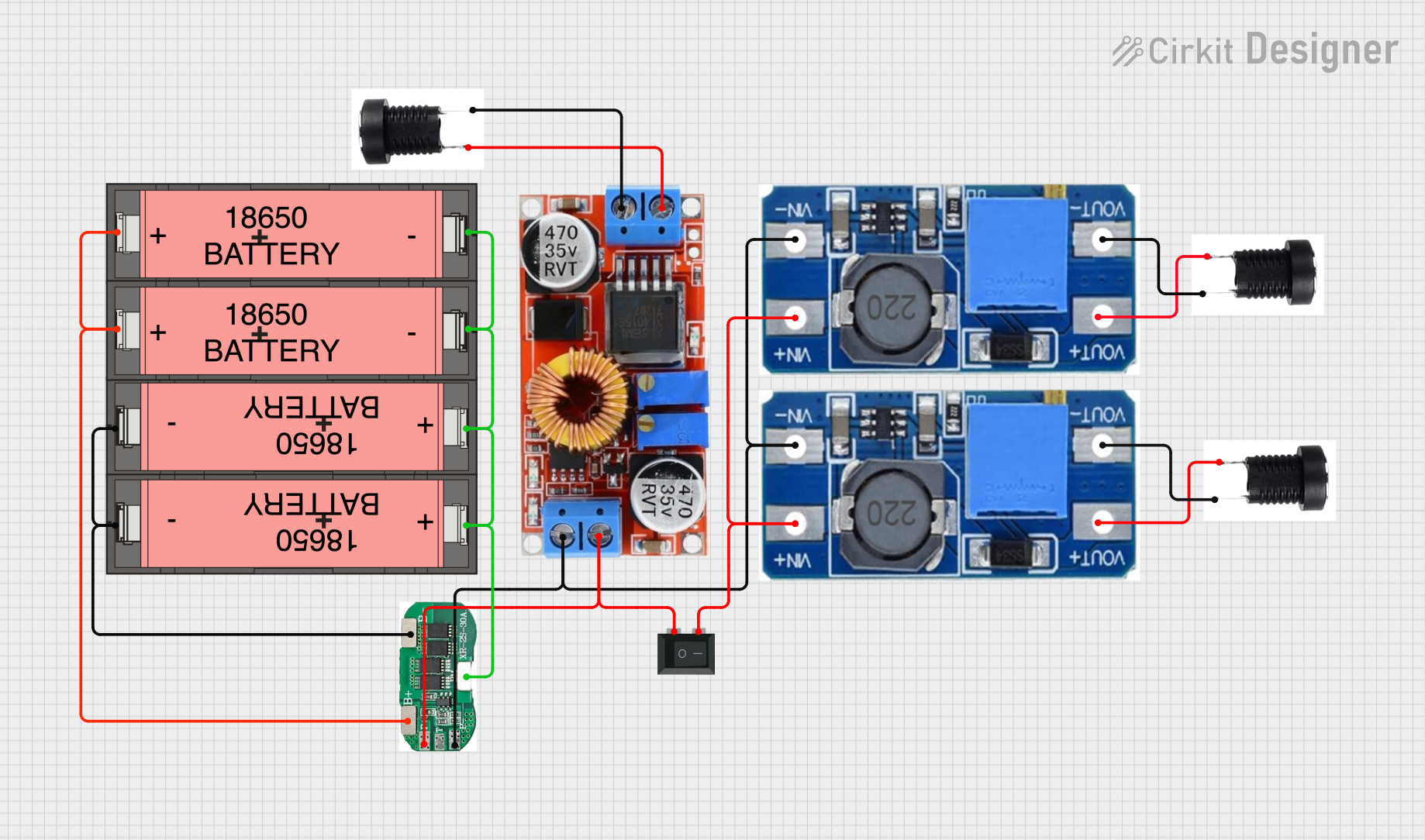
 Open Project in Cirkit Designer
Open Project in Cirkit Designer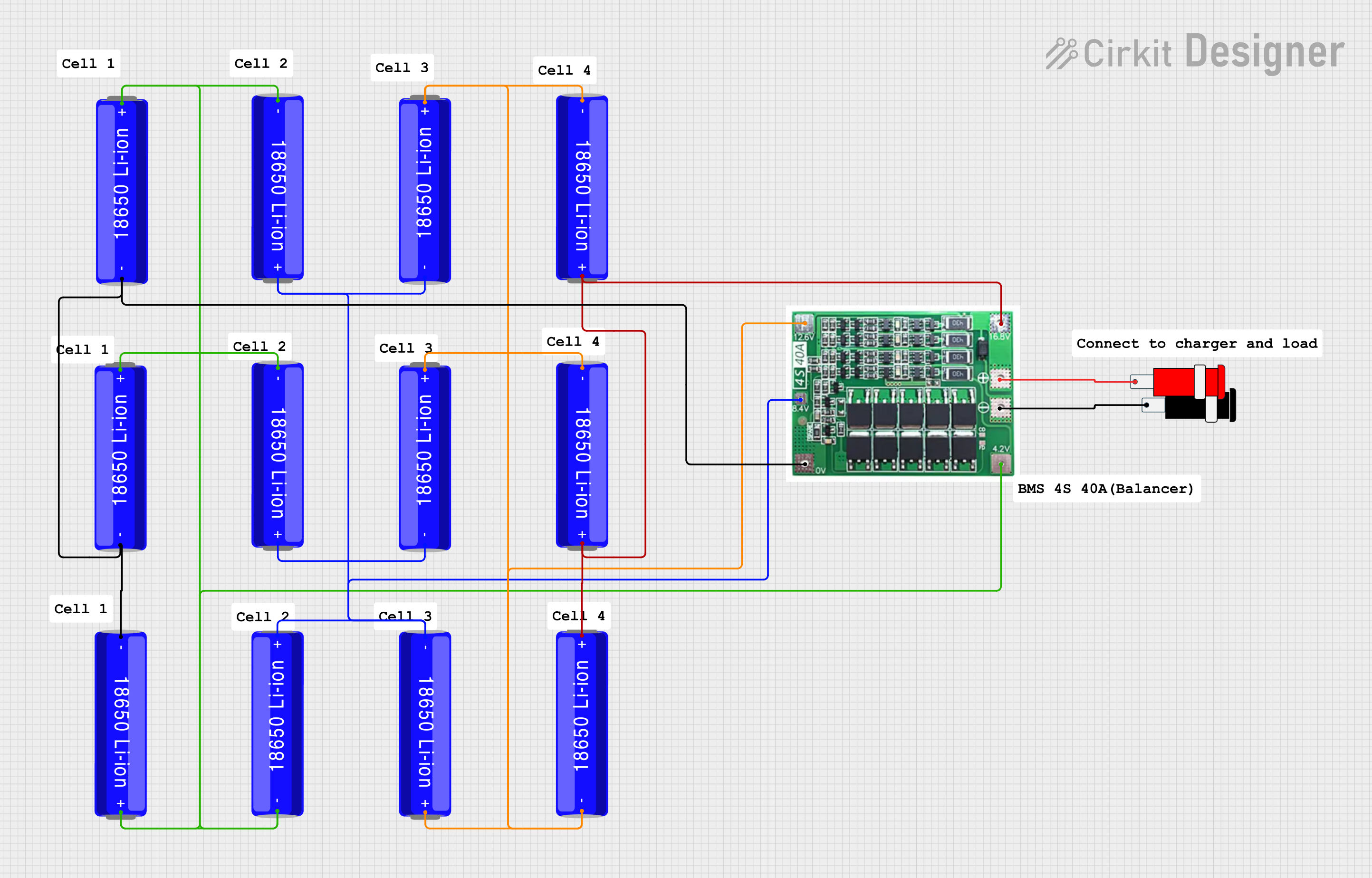
 Open Project in Cirkit Designer
Open Project in Cirkit DesignerExplore Projects Built with Vant Battery 5200mAh 50C 11.1V 57.72Wh High Discharge Li-Po Battery

 Open Project in Cirkit Designer
Open Project in Cirkit Designer
 Open Project in Cirkit Designer
Open Project in Cirkit Designer
 Open Project in Cirkit Designer
Open Project in Cirkit Designer
 Open Project in Cirkit Designer
Open Project in Cirkit DesignerCommon Applications
- RC cars, boats, and airplanes
- Drones and quadcopters
- Robotics and automation systems
- High-performance DIY electronics projects
Technical Specifications
The following table outlines the key technical details of the Vant Battery 5200mAh 50C 11.1V Li-Po Battery:
| Specification | Details |
|---|---|
| Manufacturer | Vant Battery |
| Part ID | Vant Battery 5200mAh 50C 11.1V 57.72Wh High Discharge Li-Po Battery |
| Battery Type | Lithium Polymer (Li-Po) |
| Nominal Voltage | 11.1V |
| Capacity | 5200mAh |
| Discharge Rate (C-rating) | 50C |
| Energy | 57.72Wh |
| Maximum Continuous Current | 260A (calculated as 5200mAh × 50C) |
| Dimensions | Approx. 138mm × 46mm × 25mm |
| Weight | Approx. 400g |
| Connector Type | XT60 or Deans T-Plug (varies by model) |
| Balancing Connector | JST-XH |
| Operating Temperature | -20°C to 60°C |
| Storage Temperature | -10°C to 45°C |
Pin Configuration and Descriptions
The battery includes two main connectors:
- Power Connector: Used to deliver power to the load (e.g., motor or ESC).
- XT60 or Deans T-Plug: Positive and negative terminals for high-current output.
- Balancing Connector: Used for charging and balancing individual cells.
- JST-XH: Provides access to each cell for precise voltage monitoring.
| Pin | Connector Type | Description |
|---|---|---|
| 1 | JST-XH | Cell 1 positive terminal |
| 2 | JST-XH | Cell 2 positive terminal |
| 3 | JST-XH | Cell 3 positive terminal |
| 4 | JST-XH | Common ground |
| 5 | XT60/Deans T-Plug | Positive terminal for power output |
| 6 | XT60/Deans T-Plug | Negative terminal for power output |
Usage Instructions
How to Use the Battery in a Circuit
- Connect the Power Connector:
- Ensure the XT60 or Deans T-Plug is securely connected to the load (e.g., ESC or motor controller).
- Match the polarity of the connectors (positive to positive, negative to negative).
- Use a Compatible Charger:
- Always use a Li-Po-compatible balance charger to charge the battery.
- Connect the JST-XH balancing connector to the charger for proper cell balancing.
- Monitor Voltage Levels:
- Avoid discharging the battery below 3.0V per cell (9.0V total for a 3S battery) to prevent damage.
- Use a voltage alarm or battery monitor for real-time voltage tracking.
Important Considerations and Best Practices
- Charging:
- Charge the battery at a maximum rate of 1C (5.2A for this battery) to ensure safety and longevity.
- Never leave the battery unattended while charging.
- Storage:
- Store the battery at a voltage of 3.7V to 3.85V per cell (11.1V to 11.55V total) for long-term storage.
- Keep the battery in a cool, dry place away from flammable materials.
- Handling:
- Avoid puncturing, crushing, or exposing the battery to water or extreme temperatures.
- Inspect the battery for swelling or damage before each use.
- Disposal:
- Dispose of the battery at a certified recycling facility. Do not throw it in regular trash.
Example: Connecting to an Arduino UNO
While the Vant Battery is not directly connected to an Arduino UNO, it can power peripherals like motors or servos controlled by the Arduino. Use a voltage regulator or ESC to step down the voltage to a level suitable for the Arduino (5V or 7-12V).
// Example: Controlling a motor with an ESC powered by the Vant Battery
#include <Servo.h> // Include the Servo library
Servo esc; // Create a Servo object to control the ESC
void setup() {
esc.attach(9); // Connect the ESC signal wire to pin 9 on the Arduino
esc.writeMicroseconds(1000); // Send minimum throttle signal to arm the ESC
delay(2000); // Wait for the ESC to initialize
}
void loop() {
esc.writeMicroseconds(1500); // Set throttle to 50% (adjust as needed)
delay(5000); // Run the motor for 5 seconds
esc.writeMicroseconds(1000); // Stop the motor
delay(2000); // Wait before restarting
}
Troubleshooting and FAQs
Common Issues
- Battery Swelling:
- Cause: Overcharging, over-discharging, or physical damage.
- Solution: Stop using the battery immediately. Dispose of it safely.
- Battery Not Charging:
- Cause: Faulty charger, damaged balancing connector, or over-discharged cells.
- Solution: Check the charger and connectors. If the voltage is too low, use a recovery mode (if supported by the charger).
- Short Runtime:
- Cause: High load current or degraded battery capacity.
- Solution: Reduce the load or replace the battery if it has aged.
FAQs
- Can I use this battery for a 12V system?
- No, the nominal voltage is 11.1V, and the fully charged voltage is 12.6V. Ensure compatibility with your system.
- What is the maximum safe discharge current?
- The maximum continuous discharge current is 260A (50C × 5200mAh).
- How do I know when the battery is fully charged?
- The battery is fully charged when the voltage reaches 12.6V (4.2V per cell).
By following this documentation, you can safely and effectively use the Vant Battery 5200mAh 50C 11.1V Li-Po Battery in your projects.